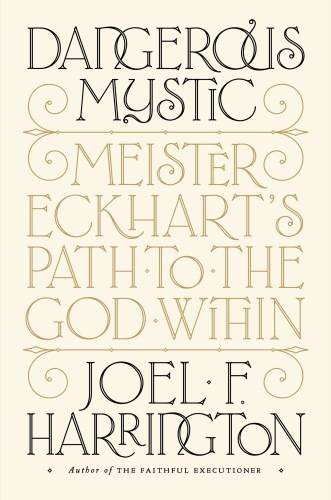
Dangerous Mystic
Meister Eckhart's Path to the God Within
کتاب های مرتبط
- اطلاعات
- نقد و بررسی
- دیدگاه کاربران
نقد و بررسی

November 1, 2017
Medieval scholar Harrington (The Faithful Executioner) presents an accessible life of the great 14th-century Christian mystic Meister Eckhart, who rattled his rigidly hierarchical church by espousing a direct and personal connection to God and influenced thinkers from Jean-Paul Sartre to Thomas Merton to the Dalai Lama.
Copyright 2017 Library Journal, LLC Used with permission.

February 1, 2018
Insightful biography of German theologian Meister Eckhart (1260-1328).Harrington (History/Vanderbilt Univ.; The Faithful Executioner: Life and Death, Honor and Shame in the Turbulent Sixteenth Century, 2013, etc.) makes a worthy effort in building this biography around a man whose life is scantily documented. Eckhart left little behind aside from sermons and theological writings, despite being one of the most learned individuals of his day. The author follows what is known of his career and uses other sources to re-create the situations and circumstances that Eckhart most likely experienced in his youth and early adulthood before moving on to his somewhat more documented later years as a public preacher and ecclesiastical administrator. A Dominican monk, Eckhart attained the rare title of "Master," or "Meister," of theology through years of study mixed with periods of leadership in his monastic order. In middle age, he began a monumental theological undertaking only to eventually cast it aside in favor of reaching the common populace (including women) with his insights on communion with God. Eckhart's ideas--which entailed negative theology (i.e., understanding God's nature by describing what he is not); "letting-go-ness" (gelazenheit), a mystical technique leading to spiritual rebirth; and direct access to the divine by even the most ordinary layperson--met with mixed reactions. Some were enthralled by his teachings, some did not understand him, and others felt he was flirting with heresy. He died in Avignon amid a papal trial over the content of his works, after which his ideas and very name were largely buried for centuries, only to be rediscovered in full force in modernity. Not only does the author craft an excellent biographical work based on outside sources, he also does an admirable job of presenting Eckhart dispassionately, as a historical figure, a theological innovator, and an impetus for modern thinkers.Extremely well-researched and fluidly written, Harrington's work will serve as a meaningful resource for students of mysticism and of late Medieval Christianity.
COPYRIGHT(2018) Kirkus Reviews, ALL RIGHTS RESERVED.

March 26, 2018
This impressive book by Harrington (The Faithful Executioner) adroitly places Meister Eckhart’s (1260–1328) key ideas about the accessibility of direct, personal, universal experience of God through the approach of Gelassenheit (“letting-go-ness”) back into proper historical and cultural context. Harrison’s key contention is that Eckhart’s original ideas have been distorted by “modern syncretists” (particularly Eckhart Tolle) and should be reconsidered through an understanding of the era’s literature, the development of the Dominican Order, and religious concerns about the relationship between clergy and laity. Harrington begins by providing a short medieval cultural history to explain Eckhart’s likely youthful influences, then considers Eckhart’s early friarhood and the seeds of his philosophy, and explores the maturation of his thought as an academic and theologian, which led him to become a pariah of the Catholic church. The final chapter looks at the conflicts caused by Eckhart’s preaching on esoteric concepts to everyday people for whom his ideas of a via negativa—living without reliance on good deeds, aestheticism, or intermediaries for salvation—had strong appeal. Harrington’s text shows that Eckhart was a man of his time: his teachings were radical, but grounded in Catholic orthodoxy and not intended to be as dangerous as many modern seekers might believe. This illuminating book successfully explains Meister Eckhart’s philosophy and large influence on Western Christian mysticism.

























دیدگاه کاربران